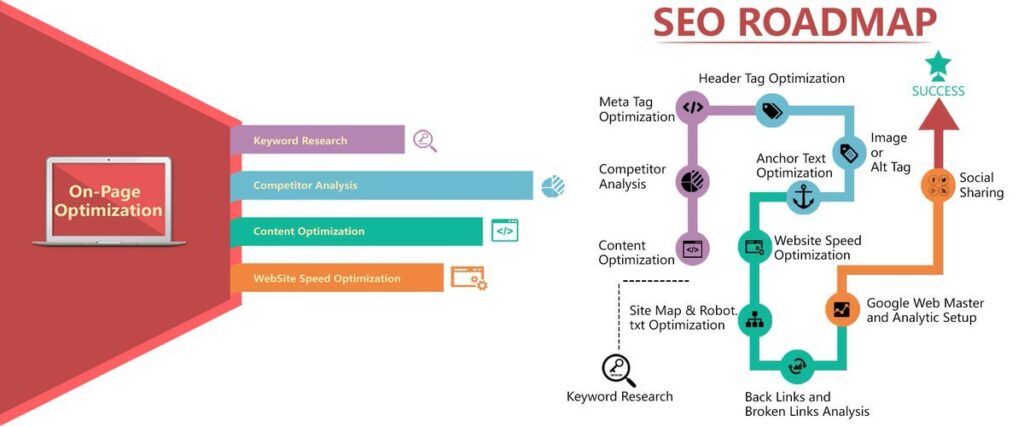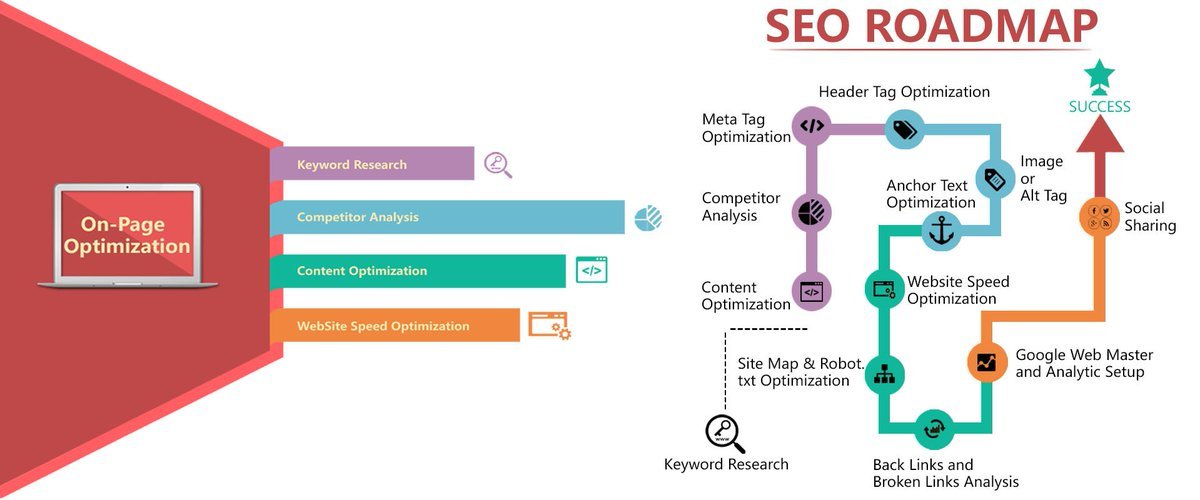
Mastering SEO Strategy: A Comprehensive PDF Guide for 2024
Search Engine Optimization (SEO) is a critical component of any successful digital marketing strategy. In the ever-evolving landscape of online visibility, having a well-defined SEO strategy is essential for driving organic traffic, improving search engine rankings, and ultimately, achieving business goals. This comprehensive guide, designed for easy download in PDF format, will delve into the core elements of a robust SEO strategy, providing actionable insights and practical tips to help you dominate the search results in 2024.
Why SEO Strategy Matters
Before diving into the specifics, it’s crucial to understand why an SEO strategy is so important. Without a strategic approach, your SEO efforts may be scattered and ineffective. A well-defined strategy provides a roadmap, ensuring that all your activities align with your overall business objectives. Here’s why you need a comprehensive SEO strategy:
- Improved Search Engine Rankings: A strategic approach helps you target the right keywords and optimize your website effectively, leading to higher rankings in search engine results pages (SERPs).
- Increased Organic Traffic: Higher rankings translate to more organic traffic, which is crucial for driving leads, sales, and brand awareness.
- Enhanced User Experience: SEO isn’t just about search engines; it’s also about providing a seamless and engaging experience for your users. A good SEO strategy considers user intent and optimizes your website accordingly.
- Cost-Effective Marketing: Compared to paid advertising, SEO offers a more sustainable and cost-effective way to attract traffic to your website.
- Competitive Advantage: In a competitive market, a strong SEO strategy can give you a significant edge over your competitors.
Key Components of an Effective SEO Strategy
A successful SEO strategy comprises several key components, each playing a vital role in achieving your desired outcomes. Let’s explore these components in detail:
1. Keyword Research
Keyword research is the foundation of any SEO strategy. It involves identifying the terms and phrases that your target audience uses when searching for products, services, or information related to your business. The goal is to uncover high-volume, low-competition keywords that you can target in your content and optimization efforts.
Tools for Keyword Research:
- Google Keyword Planner: A free tool from Google that provides keyword suggestions, search volume data, and competition analysis.
- SEMrush: A comprehensive SEO tool that offers advanced keyword research capabilities, including competitor analysis and keyword gap analysis.
- Ahrefs: Another powerful SEO tool that provides detailed keyword metrics, backlink analysis, and content research features.
- Moz Keyword Explorer: A user-friendly tool that helps you discover relevant keywords and assess their potential value.
Tips for Effective Keyword Research:
- Focus on Long-Tail Keywords: Long-tail keywords are longer, more specific phrases that tend to have lower competition and higher conversion rates.
- Consider User Intent: Understand the intent behind each keyword to create content that meets the needs of your target audience.
- Analyze Your Competitors: Identify the keywords that your competitors are targeting and look for opportunities to outperform them.
- Use a Variety of Tools: Combine different keyword research tools to get a comprehensive view of the keyword landscape.
2. On-Page Optimization
On-page optimization involves optimizing the elements within your website to improve its search engine rankings and user experience. This includes optimizing your content, meta tags, headings, and other on-page factors.
Key On-Page Optimization Techniques:
- Title Tags: Create compelling and keyword-rich title tags for each page on your website.
- Meta Descriptions: Write concise and engaging meta descriptions that entice users to click on your search results.
- Header Tags (H1-H6): Use header tags to structure your content and highlight important keywords.
- Content Optimization: Create high-quality, informative, and engaging content that satisfies user intent and incorporates relevant keywords.
- Image Optimization: Optimize your images by using descriptive file names and alt tags.
- Internal Linking: Link to other relevant pages on your website to improve navigation and distribute link juice.
- URL Structure: Create clean and descriptive URLs that include relevant keywords.
3. Off-Page Optimization
Off-page optimization refers to activities conducted outside of your website to improve its search engine rankings. This primarily involves building high-quality backlinks from reputable websites.
Effective Off-Page Optimization Strategies:
- Link Building: Acquire backlinks from authoritative websites in your industry through guest blogging, resource link building, and other strategies.
- Social Media Marketing: Promote your content on social media platforms to increase visibility and drive traffic to your website.
- Brand Mentions: Monitor brand mentions and engage with those who are talking about your business online.
- Online Reputation Management: Manage your online reputation by addressing negative reviews and promoting positive feedback.
- Directory Submissions: Submit your website to relevant online directories to increase its visibility.
4. Technical SEO
Technical SEO involves optimizing the technical aspects of your website to improve its crawlability, indexability, and overall performance. This includes ensuring that your website is mobile-friendly, has a fast loading speed, and is free of technical errors.
Essential Technical SEO Elements:
- Mobile-Friendliness: Ensure that your website is responsive and provides a seamless experience on mobile devices.
- Website Speed: Optimize your website’s loading speed by compressing images, leveraging browser caching, and using a content delivery network (CDN).
- Site Architecture: Create a clear and logical site architecture that makes it easy for search engines to crawl and index your website.
- XML Sitemap: Submit an XML sitemap to Google Search Console to help search engines discover and index your website’s pages.
- Robots.txt File: Use a robots.txt file to control which pages search engines can crawl and index.
- HTTPS: Ensure that your website is secured with HTTPS to protect user data and improve search engine rankings.
- Schema Markup: Implement schema markup to provide search engines with more information about your content and improve its visibility in search results.
5. Content Marketing
Content marketing is the process of creating and distributing valuable, relevant, and consistent content to attract and engage a target audience. High-quality content is essential for attracting organic traffic, building brand authority, and driving conversions.
Types of Content to Create:
- Blog Posts: Create informative and engaging blog posts that address the needs and interests of your target audience.
- Articles: Publish in-depth articles on relevant topics to establish your expertise and attract backlinks.
- Infographics: Create visually appealing infographics that present complex information in an easy-to-understand format.
- Videos: Produce engaging videos that showcase your products, services, or expertise.
- Ebooks: Offer valuable ebooks as lead magnets to attract new subscribers and generate leads.
- Case Studies: Share success stories and case studies to demonstrate the effectiveness of your products or services.
- Podcasts: Create audio content that provides valuable insights and engages your target audience.
6. Analytics and Monitoring
Analytics and monitoring are crucial for tracking the performance of your SEO strategy and identifying areas for improvement. By tracking key metrics, you can gain valuable insights into your website’s traffic, rankings, and conversions.
Key Metrics to Track:
- Organic Traffic: Monitor the amount of traffic coming to your website from organic search.
- Keyword Rankings: Track your website’s rankings for target keywords.
- Bounce Rate: Monitor the percentage of visitors who leave your website after viewing only one page.
- Time on Page: Track the average amount of time visitors spend on your website’s pages.
- Conversion Rate: Monitor the percentage of visitors who complete a desired action, such as making a purchase or filling out a form.
- Backlinks: Track the number and quality of backlinks pointing to your website.
Tools for Analytics and Monitoring:
- Google Analytics: A free tool from Google that provides detailed insights into your website’s traffic and user behavior.
- Google Search Console: A free tool from Google that helps you monitor your website’s performance in search results and identify technical issues.
- SEMrush: A comprehensive SEO tool that offers advanced analytics and monitoring capabilities.
- Ahrefs: Another powerful SEO tool that provides detailed backlink analysis and competitor analysis features.
Creating Your SEO Strategy PDF
Now that we’ve covered the key components of an effective SEO strategy, let’s discuss how to create your own SEO strategy PDF. This PDF will serve as a comprehensive guide for your SEO efforts, ensuring that you stay on track and achieve your desired outcomes.
Steps to Create Your SEO Strategy PDF:
- Define Your Goals: Clearly define your SEO goals, such as increasing organic traffic, improving search engine rankings, or driving conversions.
- Conduct Keyword Research: Identify the keywords that your target audience uses when searching for products, services, or information related to your business.
- Analyze Your Website: Conduct a thorough analysis of your website to identify areas for improvement in terms of on-page optimization, technical SEO, and content.
- Develop a Content Plan: Create a content plan that outlines the types of content you will create, the topics you will cover, and the publishing schedule.
- Outline Your Link Building Strategy: Develop a strategy for acquiring high-quality backlinks from reputable websites.
- Establish a Monitoring Plan: Define the key metrics you will track and the tools you will use to monitor your SEO performance.
- Document Your Strategy: Document your SEO strategy in a clear and concise PDF document.
- Review and Update Regularly: Regularly review and update your SEO strategy to adapt to changes in the search engine landscape and ensure that it remains effective.
SEO Best Practices for 2024
The world of SEO is constantly evolving, so it’s essential to stay up-to-date with the latest best practices. Here are some key SEO best practices to keep in mind for 2024:
- Focus on User Experience: Prioritize user experience by creating a website that is fast, mobile-friendly, and easy to navigate.
- Create High-Quality Content: Focus on creating valuable, informative, and engaging content that satisfies user intent.
- Optimize for Mobile: Ensure that your website is fully optimized for mobile devices, as mobile search continues to grow.
- Build High-Quality Backlinks: Focus on acquiring backlinks from authoritative websites in your industry.
- Use Schema Markup: Implement schema markup to provide search engines with more information about your content.
- Monitor Your Performance: Regularly monitor your SEO performance and make adjustments as needed.
- Stay Up-to-Date: Stay informed about the latest SEO trends and best practices by following industry blogs, attending webinars, and participating in online communities.
Conclusion
Developing and implementing a comprehensive SEO strategy is essential for achieving online success in 2024. By focusing on keyword research, on-page optimization, off-page optimization, technical SEO, content marketing, and analytics, you can improve your search engine rankings, drive organic traffic, and achieve your business goals. Remember to create your own SEO strategy PDF to guide your efforts and stay on track. With dedication and a strategic approach, you can master SEO and dominate the search results.
Download this comprehensive SEO strategy as a PDF to keep as a handy reference guide for your 2024 SEO efforts. Stay ahead of the curve and optimize your online presence for maximum impact!

